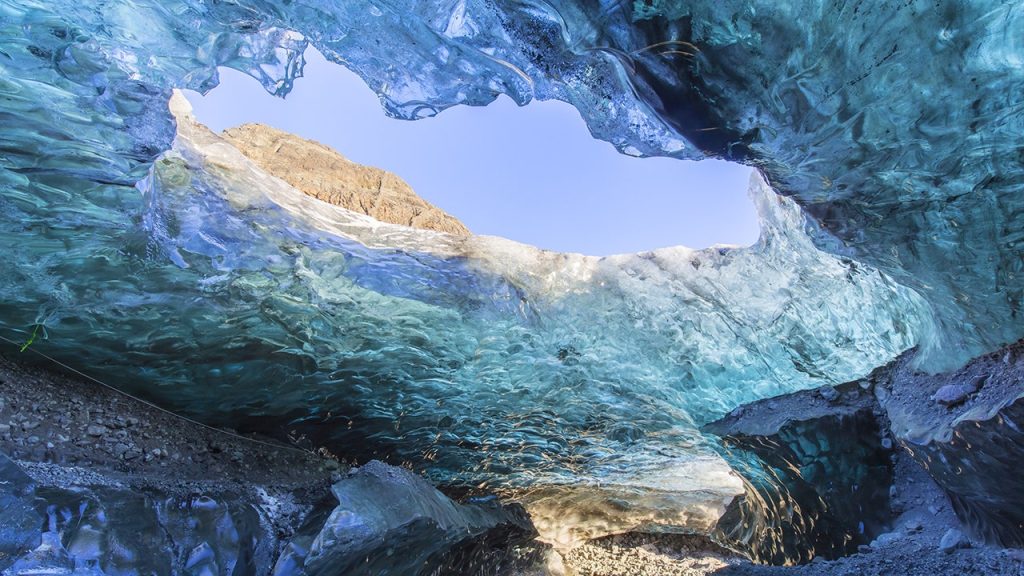One tourist has died and two others are missing after an ice cave partially collapsed in southern Iceland. The incident occurred while a group of 25 foreign tourists, accompanied by a guide, were exploring the ice caves near the Breidamerkurjokull glacier. Four people were struck by falling ice, resulting in one fatality and another individual being seriously injured and airlifted to a hospital in the capital city. The search for the two missing individuals began immediately, but was halted after dark due to difficult conditions. Rescuers have been working tirelessly to locate the missing tourists, cutting through the ice by hand using chain saws.
The search for the missing tourists is set to resume the next morning, with about 200 rescuers involved in the efforts. The rugged glacier terrain has made it challenging to transport additional equipment and personnel to the site. Chief Superintendent Sveinn Kristján Rúnarsson of the local police has expressed confidence in the experience and expertise of the mountain guides leading the tours, stating that they are able to assess the safety of the environment effectively. He emphasized that the guides have a good track record and have been doing this type of work for a long time.
Authorities have stated that there is no evidence to suggest that the guided tour of the ice caves should not have taken place. The collapse of the ice cave is believed to be unrelated to a recent volcanic eruption that occurred around 185 miles away from the glacier. The incident serves as a reminder of the unpredictable nature of the environment and the risks associated with exploring natural landmarks such as ice caves. The tragedy has brought attention to the importance of safety measures and precautions when engaging in activities in remote and challenging terrains.
The news of the ice cave collapse has sparked concern and condolences from the international community, as people from various nationalities were involved in the guided tour. The tragic event serves as a reminder of the potential dangers that can arise while exploring natural wonders such as glaciers and ice caves. The efforts of the rescuers to locate the missing tourists demonstrate the dedication and commitment of emergency response teams in Iceland. The incident highlights the need for caution and proper risk assessment when engaging in activities in remote and potentially hazardous environments.
The impact of the ice cave collapse on the tourism industry in Iceland remains to be seen, as the incident may lead to increased scrutiny and regulation of guided tours in the region. The safety protocols and procedures implemented by tour operators will likely come under review to prevent similar tragedies from occurring in the future. The local authorities and emergency response teams are working diligently to ensure the safety of visitors to natural landmarks in Iceland, emphasizing the importance of being prepared and informed when venturing into remote and unpredictable environments. The tragedy serves as a sobering reminder of the inherent risks associated with exploring the wonders of nature.


